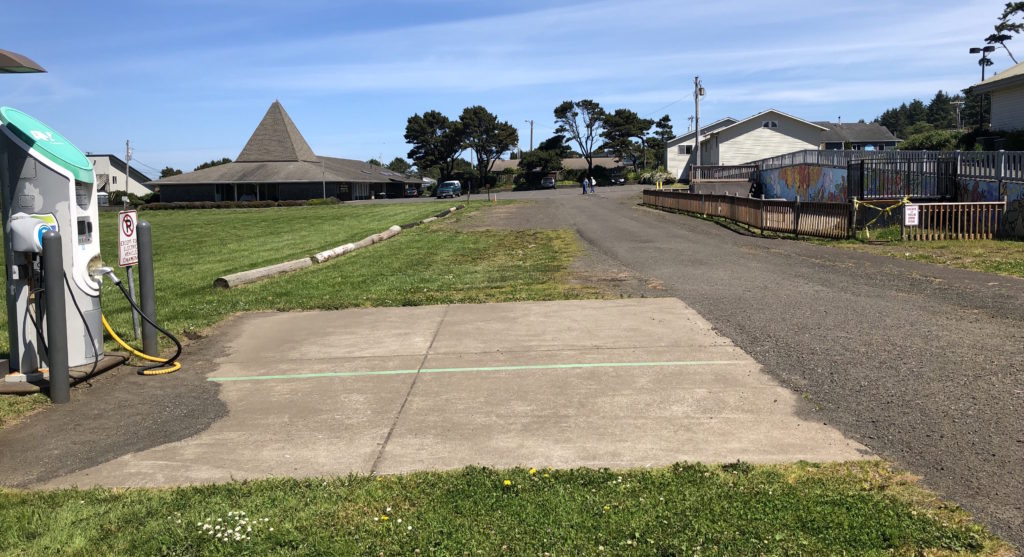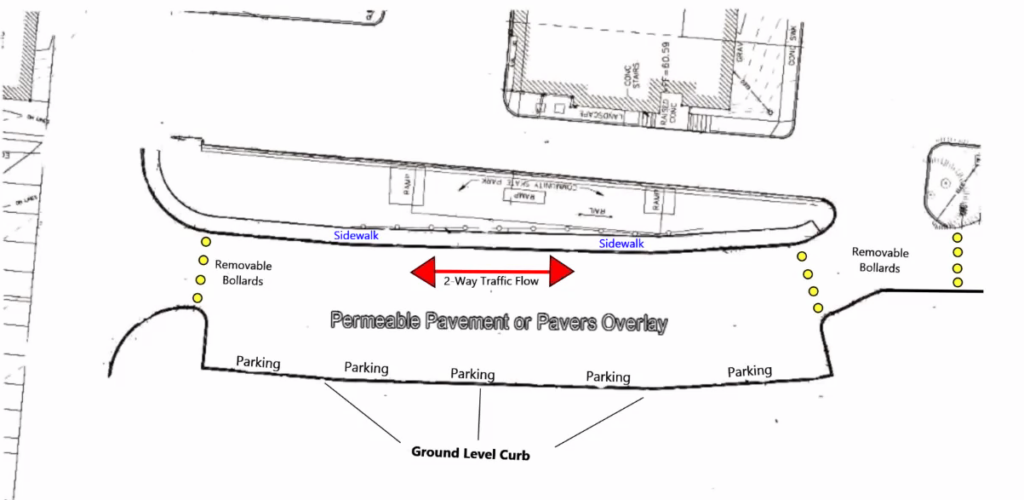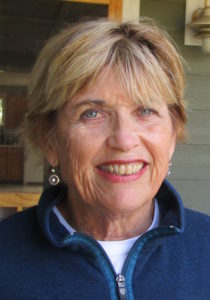
By QUINTON SMITH/YachatsNews.com
After four months of debate, a proposal to pave a 100-yard portion of Driftwood Lane behind the city’s 501 Building got a tentative go-ahead Wednesday.
Call it a blinking yellow light.
The Yachats City Council voted 5-0 to have city staff work with its engineers to re-do an original plan from February that drew resistance from many community members and two councilors.
The revised plan still has to be approved by the Oregon Department of Transportation, which awarded the city a $100,000 grant based on the original design.
City Manager Shannon Beaucaire told the council that ODOT staff seems receptive to changes sketched out by streets supervisor Rick McClung.
“In my conversations with ODOT I’m pretty confident this plan would meet their requirements,” Beaucaire said. “They want to work with us.”
The first design approved by the council on a 3-2 vote in June had two lanes for traffic, two sidewalks and parking for 18 cars.
But the go-ahead stalled after two councilors and some community members objected to the project’s footprint, which extended out into the grass field west of Driftwood Lane, and others objected to the project’s $165,000 cost.
The council backtracked in August, holding a special online meeting with community members to discuss it. The council also asked three city commissions and anyone else to again weigh in with ideas.
But it was a design by Planning Commission member Jacqueline Danos and her son, David Danos, that got much of the city thinking in different terms. They sketched out a project that could also serve as a base for community events and as a gateway to the greenspace and wetlands to the west.
That led McClung to offer his own sketch Wednesday.

It narrowed the street to allow two-way traffic but on one, wider lane, has one sidewalk that separates the skatepark from the street, and unmarked parking – all within the same footprint of the current street and parking area. The plan also calls for ways to close of the street by using removable barriers and possibly using permeable asphalt, depending on its cost.
McClung stressed that his sketch is only the first phase of the project. The city can later – if it wants – add bioswales, landscaping, benches for seating, or even a boardwalk.
“This is more than just paving,” McClung said. “It’s something the community came together on. But this is Phase 1.”
Council members, including Leslie Vaaler and Mary Ellen O’Shaughnessey who had vigorously opposed the original project, liked the plan.
But Dawn Keller, a Parks & Commons commission member who is seeking election to the council in November, continued her objections to the project, maintaining that not enough people knew about it or had offered their opinions.
“I’m not as opposed to this as you think I am,” Keller said. “I’m not convinced this is what people want. We haven’t asked them.”

That drew immediate rebuttal from O’Shaughnessey and Mayor John Moore, who said once the project was halted in July there had been lots of feedback from people – but also adding that not everyone will necessarily care or have an opinion.
Once the project was paused, both said that the city heard from lots of people and from three important commissions or their members.
O’Shaughnessey reminded Keller that the latest plan met community and commission goals for preserving greenspace, trying to lower its cost, and adding parking.
“We’re not going to be able to get everyone involved or get absolute agreement,” she said. “There is a point at which we need to make a decision.”
Moore said the latest plan was a starting point for new engineering, pricing, and whether it passes muster with ODOT.
“Let’s hope for the best and a good result from ODOT,” he said.


